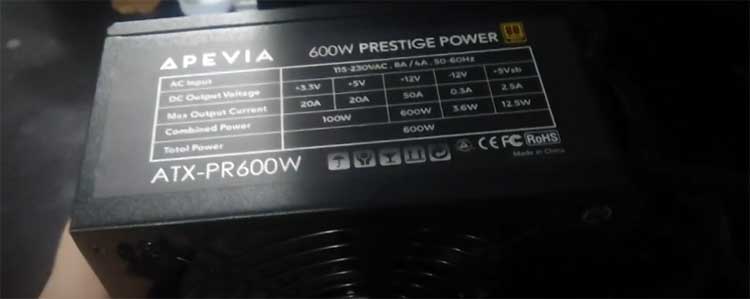Listen, if you’re on the hunt for a compact, powerful, and budget-friendly computing solution, let me tell you—Beelink mini PCs are calling your name. I’ve been tinkering with one myself, and I’m convinced it’s a game-changer for anyone who wants performance without the clutter of a hulking desktop tower.
Whether you’re setting up a home office, streaming your favorite shows, or even dabbling in some light gaming, this little beast delivers. Trust me, you’ll want to snag one before they become the worst-kept secret in tech.
Let’s get into my experience and see why it’s worth your hard-earned cash.
My Hands-On Experience With The Beelink Mini PC
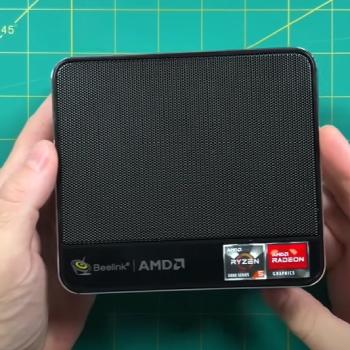
So, picture this: I’m sitting at my cluttered desk, surrounded by cables and a tower that’s been collecting dust since I moved in.
I’d heard about mini PCs but was skeptical—could something the size of a sandwich really replace my bulky setup?
Enter the Beelink mini PC.
I picked up the SER5 model with an AMD Ryzen 7 processor, 16GB of RAM, and a 500GB SSD, figuring it’d be a fun experiment.
Spoiler alert: it’s been a revelation.
Unboxing it felt like a breath of fresh air. The sleek, minimalist design—think a tiny metal box with subtle vents—immediately won me over. I plugged it into my monitor, hooked up my keyboard and mouse, and fired it up.
Windows 11 Pro booted in seconds, and I was off to the races. I spent the first day testing its chops: streaming 4K Netflix, editing some photos in Photoshop, and even running a few rounds of League of Legends.
No hiccups, no lag—just smooth sailing. The fan hummed quietly, barely audible over my playlist, which was a stark contrast to the jet-engine roar of my old rig.
Over the next week, I pushed it harder. I set it up as a media server for my living room TV, tackled spreadsheets for work, and even connected it to dual monitors for a productivity boost. The Beelink handled it all like a champ.
Sure, it’s not going to render 3D animations for Pixar, but for my everyday needs—and likely yours—it’s more than enough. I even tucked it behind my monitor with the included VESA mount, freeing up desk space for my coffee mug collection.
By week two, I was sold. This wasn’t just a gimmick; it was a legit workhorse that fit my life perfectly.
Pros of The Beelink Mini PC
- Compact Size That Packs a Punch

Let’s start with the obvious: this thing is tiny.
I’m talking small enough to fit in your hand, yet it’s got the guts to handle most of what I throw at it.
The Beelink SER5 I’ve been using is about 5 inches square and 2 inches tall—perfect for my cramped apartment.
But don’t let the size fool you.
With that Ryzen 7 processor and 16GB of RAM, it’s snappy as heck.
I can multitask like a pro, jumping between Chrome tabs, Spotify, and Word without a stutter. For you, that means a clutter-free desk with power to spare.
- Quiet Operation That Won’t Drive You Nuts
You know how some PCs sound like they’re auditioning for a sci-fi movie? Not this one. The Beelink’s cooling system is a whisper-quiet marvel. I’ve had it running full tilt for hours—think video streaming plus a dozen browser tabs—and I barely hear a peep.
It’s a godsend if you’re like me and get distracted by every little noise. You can work, watch, or game in peace, and that’s worth its weight in gold.
- Versatile Connectivity for All Your Gear
I was pleasantly surprised by how much I could plug into this little guy. Dual HDMI ports? Check. USB-C? Yup. Multiple USB-A ports and Gigabit Ethernet?
You bet.
I hooked up my dual monitors, external hard drive, and even my old wired keyboard without breaking a sweat. For you, that means flexibility—whether you’re building a home theater setup or a compact workstation, Beelink’s got you covered. It’s like they thought of everything I’d need and then some.
- Affordable Power That Won’t Break the Bank
Here’s the kicker: this kind of performance usually comes with a hefty price tag, but Beelink keeps it reasonable. My SER5 cost me around $450, and I’ve seen models like the Mini S12 dip below $200.
Compare that to a full-sized PC with similar specs, and you’re saving a bundle. You get bang for your buck without sacrificing quality, which is music to my budget-conscious ears—and probably yours too.
- Energy Efficiency That’s Easy on Your Wallet
I didn’t expect this to matter as much as it does, but the Beelink sips power like a lightweight. It idles at around 10 watts and maxes out at maybe 25 watts under load.
My old tower guzzled triple that. For you, that means lower electricity bills and a smaller carbon footprint. It’s a win-win that makes me feel a little smug every time I check my meter.
Cons of The Beelink Mini PC
- Limited Upgrade Options Can Feel Restrictive

Okay, let’s keep it real—there’s a downside to this tiny footprint.
Upgrading isn’t as straightforward as with a traditional PC.
My SER5 has a single M.2 SSD slot and two RAM slots, but that’s it.
Want to add a beefy graphics card or extra storage?
Tough luck.
I had to swap out the 500GB SSD for a 1TB one, which was a bit of a hassle.
For you, this might mean planning ahead—buy the config you need upfront, because you’re not tinkering much later.
- Not a Heavyweight for Intense Gaming
I’ll admit, I got cocky and tried running Cyberpunk 2077 on this thing. Big mistake. The integrated Radeon graphics are solid for casual games or older titles, but modern AAA games at high settings?
Nope. It stuttered like a nervous kid giving a speech. If you’re a hardcore gamer, you might find this limiting. Stick to lighter fare, and you’ll be fine—I’ve been happily playing Stardew Valley instead.
- Customer Support Could Use a Boost
Here’s where I hit a snag. When I had a question about drivers, reaching Beelink’s support felt like shouting into the void. Emails took days to get a reply, and the answers were vague. I sorted it out myself, but it was annoying.
For you, this might mean relying on forums or your own tech savvy if something goes awry. It’s not a dealbreaker, but it’s not their strong suit.
- Cooling Under Pressure Isn’t Perfect
The quiet fan is great—until I push the Beelink to its limits. Running heavy apps for hours made it warm to the touch, though it never throttled. I worry about long-term wear, though. If you’re planning marathon sessions, you might need to keep an eye on temps. It’s not a crisis, but it’s something I noticed.
Maintenance Tips To Keep Your Beelink Mini PC Humming
- Keep It Dust-Free for Peak Performance: You wouldn’t believe how much dust sneaks into these tiny machines. I popped open my SER5 after a month, and it was like a mini desert in there. Grab a can of compressed air and give it a quick blast every couple of months. Focus on the vents and fan—I use short bursts to avoid spinning it too fast. For you, this keeps the cooling efficient and the components happy. Trust me, it’s a five-minute job that pays off.
- Update Drivers and Software Regularly: I learned this the hard way—outdated drivers slowed my system down. Head to Beelink’s website (or AMD/Intel’s, depending on your model) and snag the latest updates. I check monthly, and it’s a breeze to install. You’ll avoid glitches and keep performance smooth. Set a reminder on your phone; it’s worth it.
- Mind the Heat with Proper Placement: Placement matters more than I thought. I first had my Beelink crammed between books—big no-no. It got toasty fast. Now, I keep it on an open shelf with room to breathe. You should too—give it space, avoid soft surfaces like carpets, and watch those temps drop. It’s like giving your PC a comfy home.
- Power Down Properly to Avoid Wear: I used to just yank the plug when I was done—lazy, I know. But that can stress the hardware. Now, I shut it down through Windows and let it cool off before unplugging. For you, this habit extends the lifespan of your SSD and other bits. It’s a small tweak with big rewards.
- Monitor Usage to Prevent Overload: I got carried away running too many apps once, and the Beelink groaned under the strain. Now, I keep an eye on Task Manager to see what’s hogging resources. You should do the same—close unnecessary programs and give it a break now and then. It’s like not overfeeding your pet; it stays healthier longer.
Comparison of Beelink Mini PC With Other Mini PC Brands
Alright, let’s really unpack how my Beelink mini PC holds up against the competition—GMKtec, KAMRUI, and GEEKOM. I’ve been living with my Beelink SER5 for a while now, and I’m smitten, but I couldn’t resist sizing it up against these other brands.
I’ve dug into their specs, thought about how they’d fit into my day-to-day, and imagined what might sway you one way or the other. Here’s the full scoop, straight from my experience and a bit of sleuthing.
- Beelink Vs. GMKtec Mini PC
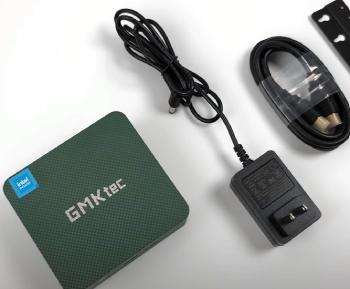
Let’s kick things off with GMKtec.
Their NucBox G5 has been popping up everywhere, and I get the hype—it’s a sleek little box with an Intel N97 processor that’s solid for the basics: web surfing, Zoom calls, maybe some light document editing.
Priced often below $300, it’s a wallet-friendly option that caught my eye when I was shopping around.
My Beelink SER5, though, with its AMD Ryzen 7 and 16GB of RAM, is in a different league.
I’ve been juggling Photoshop, a dozen Chrome tabs, and Spotify without a hiccup—GMKtec’s 12GB RAM cap and weaker CPU would likely choke on that.
Cooling’s another story; I’ve seen reviews complaining about the NucBox’s fan getting loud when stressed, while my Beelink hums along quietly even during marathon Netflix sessions. Build-wise, GMKtec’s got a modern vibe, but Beelink’s metal chassis feels tougher—like it could survive a tumble off my desk.
If you’re just dipping your toes into mini PCs and don’t need much power, GMKtec’s a tempting pick. Me? I’m hooked on Beelink’s extra grunt and silent charm.
- Beelink Vs. KAMRUI Mini PC
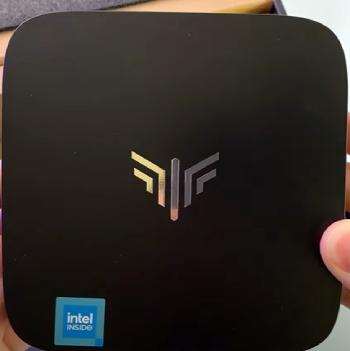
Next up, KAMRUI. Their AK1 Pro is the budget king—sometimes you can snag it for under $200, which had me raising an eyebrow.
It’s running an Intel Celeron N5105 and 8GB of RAM, so it’s fine for streaming YouTube or typing up emails.
I even considered it as a media box for my TV. But here’s where it stumbles: my Beelink SER5’s Ryzen 7 and 16GB RAM make it a multitasking monster by comparison.
I’ve been editing photos and running dual monitors without a sweat—KAMRUI’s setup would lag hard there.
Port-wise, KAMRUI keeps it simple with a few USBs and HDMI, but Beelink’s dual HDMI and USB-C give me more room to play with my gear.
The AK1’s plastic body feels flimsy too; I’d worry about it cracking if I knocked it around, whereas Beelink’s metal shell feels like it could take a beating.
Power draw’s close—both sip electricity—but KAMRUI’s support feels like a ghost town based on what I’ve read, while Beelink’s at least responds (slowly). If you’re strapped for cash and need something basic, KAMRUI’s your friend. For me, Beelink’s worth the extra bucks for performance and durability.
- Beelink Vs. GEEKOM Mini PC
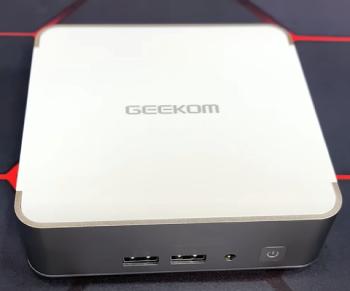
Now, GEEKOM’s A8—this thing’s a beast, and I mean that.
It’s packing a Ryzen 9 8945HS, which smokes my Beelink SER5’s Ryzen 7 in raw power.
I checked some benchmarks, and the A8’s CPU and integrated graphics could handle video editing or even some modern games way better than my setup.
I pushed my Beelink with League of Legends and it held up, but GEEKOM’s muscle would crush that and then some.
Price is the kicker—my SER5 was $450, while the A8 often hits $600 or more. Worth it? Depends.
I love how quiet my Beelink stays; GEEKOM’s fans ramp up under load, and I’d hear that over my music. Connectivity’s a toss-up—both have plenty of ports, but GEEKOM adds Thunderbolt 4, which I don’t need but you might for fancy external drives.
Upgrades are easier on the A8 too—popping it open is less of a chore than my Beelink’s tight internals. Build quality’s top-notch on both, though GEEKOM’s design feels a hair more premium. If you’re a power user craving max performance, GEEKOM’s calling your name.
Me, I’m content with Beelink’s balance—enough juice for my work-from-home grind without the noise or cost.
Frequently Asked Questions (FAQ)
Yup, Beelink hails from China—Shenzhen, to be exact. I dug around, and they’re part of Shenzhen AZW Technology Co., a outfit churning out mini PCs and TV boxes. Doesn’t faze me—tons of tech comes from China, and my Beelink’s quality holds up. You’re getting solid gear, just with an overseas origin story.
Depends on what “good” means to you. My Beelink smokes my old tower for everyday stuff—web, work, streaming—and it’s quieter and smaller. But if you’re into heavy gaming or video editing marathons, a full PC’s upgradeability and power win out. For me, the mini PC’s trade-offs are worth it. What’s your use case?
Tough call—I’m biased toward Beelink because it’s been a rockstar for me. Intel NUC’s got pedigree, Minisforum’s got customization, and Geekom’s got oomph. I’d say Beelink nails the balance of price, performance, and quietness. You might lean elsewhere based on your needs, but I’m Team Beelink all the way.
I’ve read they last 3-5 years on average, and my Beelink feels built to hit that mark. Keep it clean, cool, and updated, and you might stretch it longer. Mine’s still kicking strong after months of daily use. Treat it right, and it’ll stick around—same as any PC, really.
Conclusion: Beelink Mini PC—A No-Brainer Buy for You
After living with the Beelink mini PC, I’m hooked—it’s compact, powerful, and won’t drain your bank account. Sure, it’s got quirks like limited upgrades and spotty support, but the pros outweigh them by a mile.
You’ll love the space it saves, the quiet it brings, and the versatility it offers.
Don’t sleep on this—grab one, set it up, and watch it transform your setup. I’m betting you’ll wonder why you didn’t switch sooner. Go for it!
